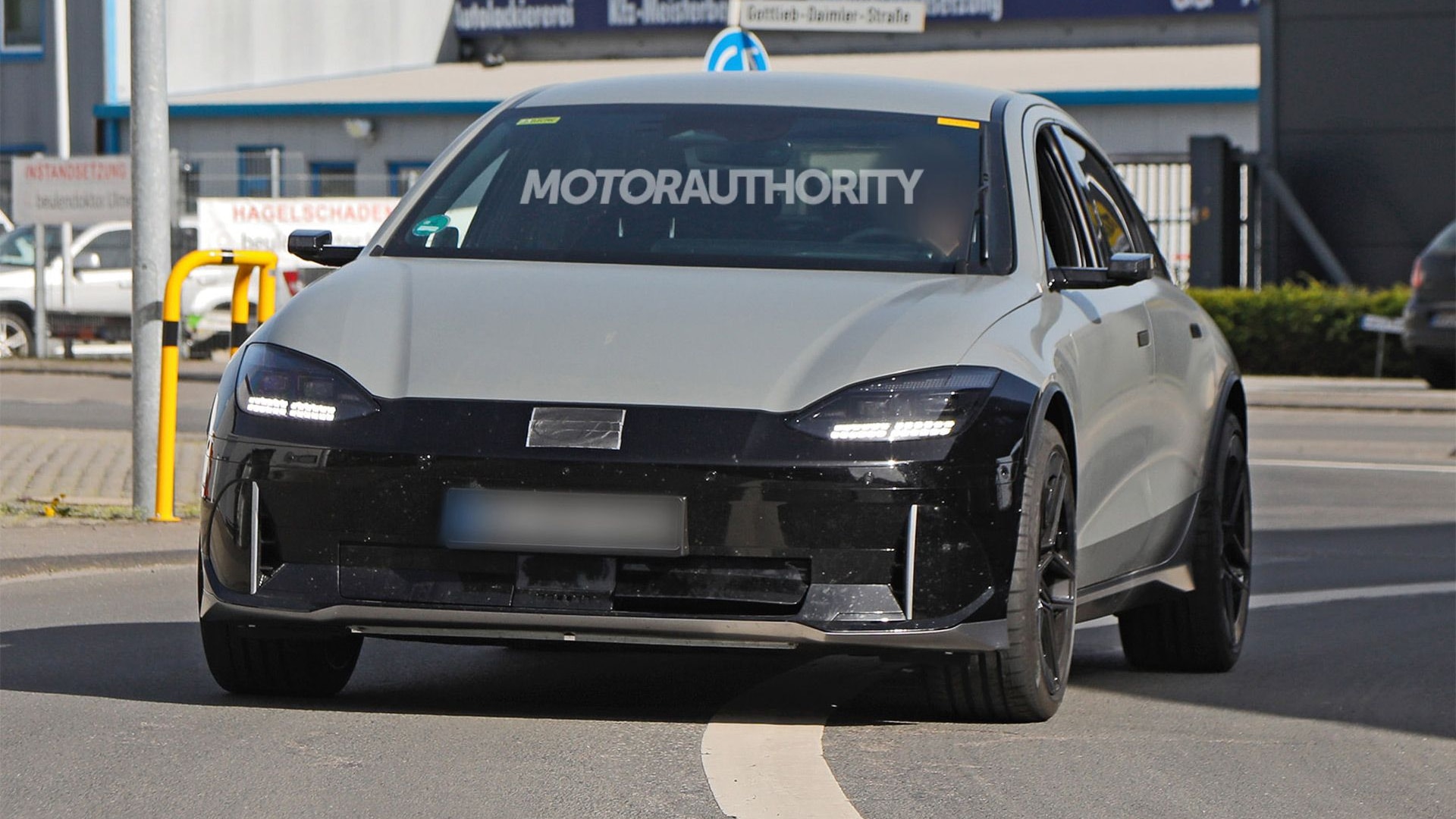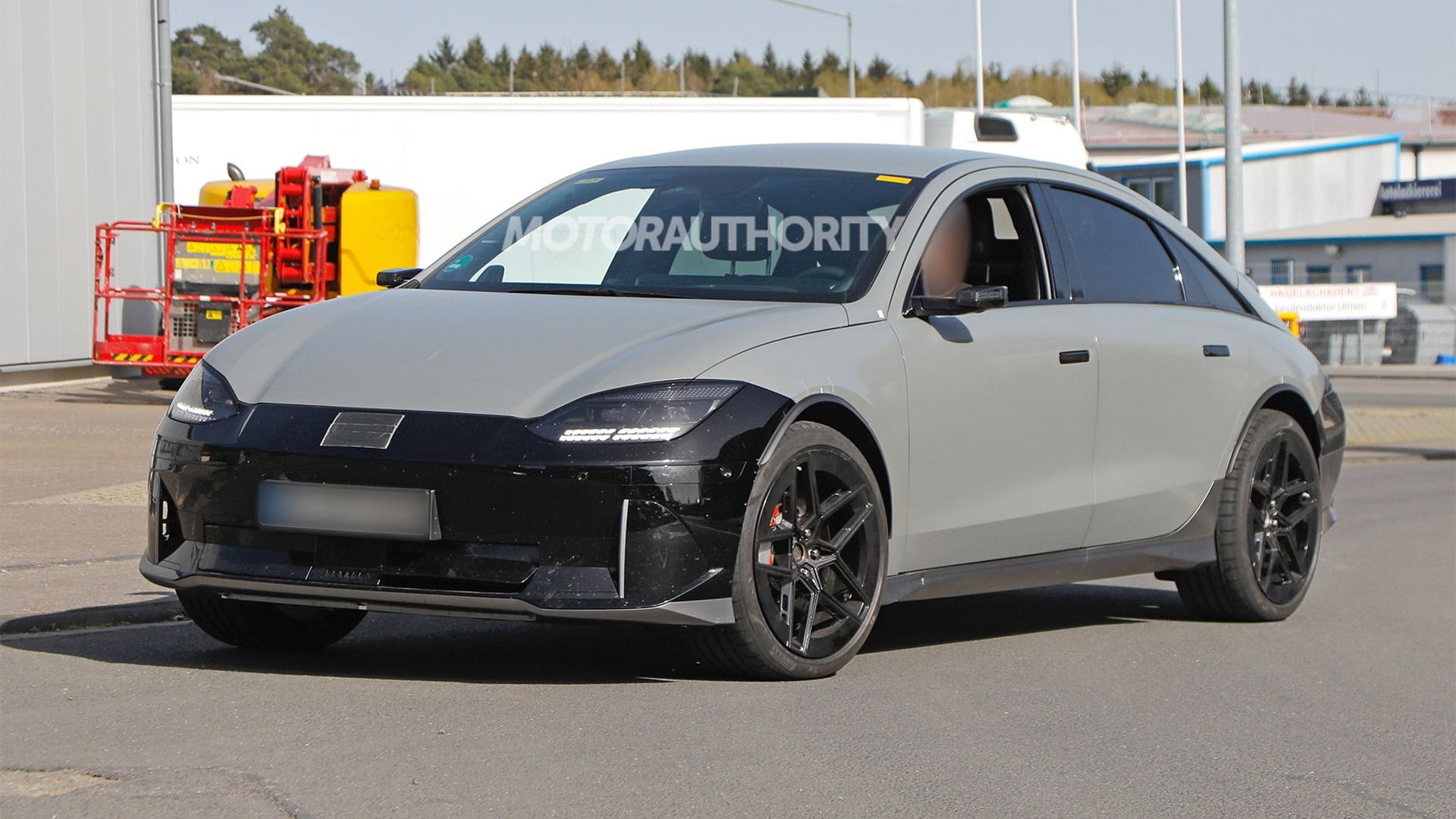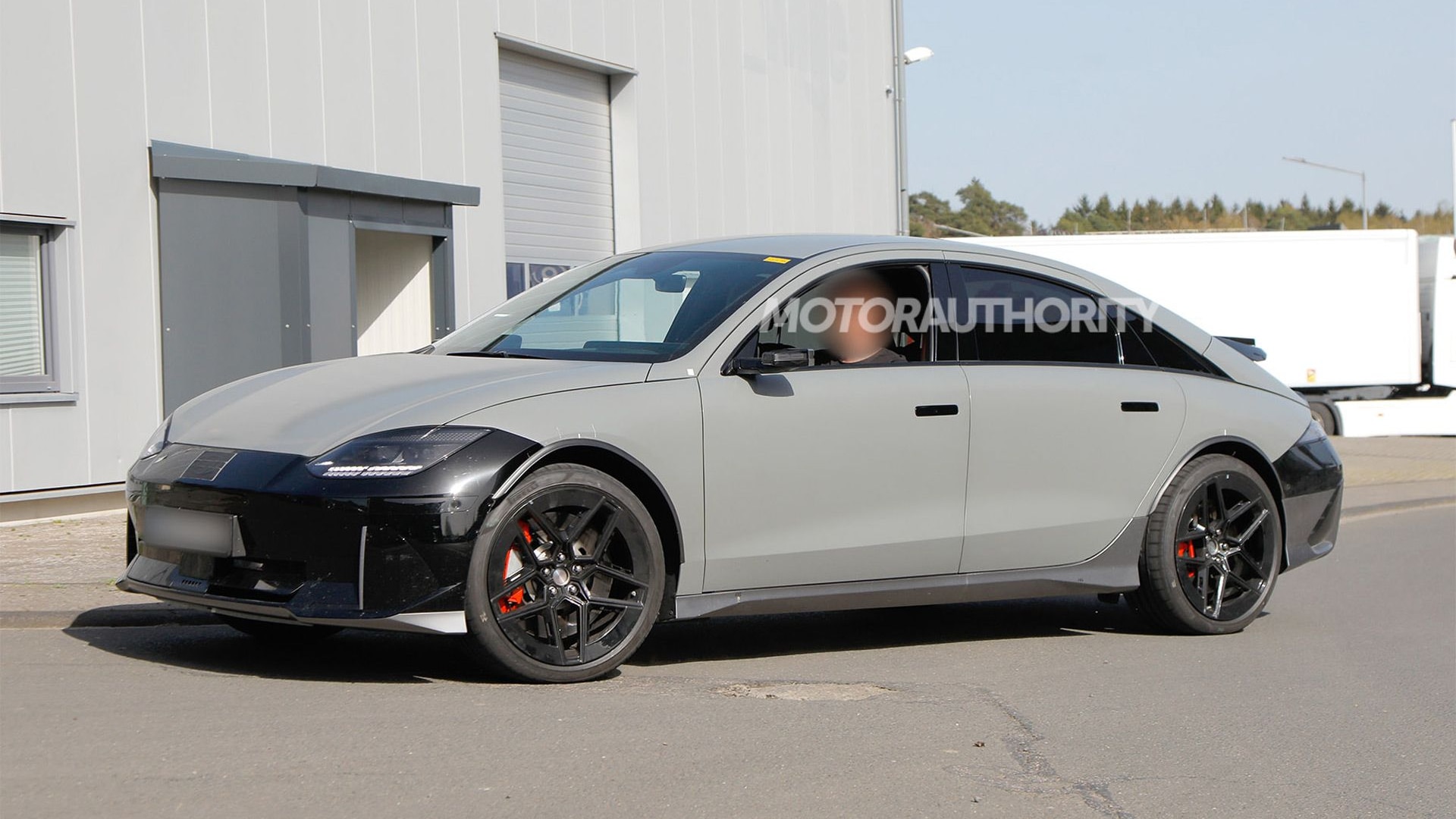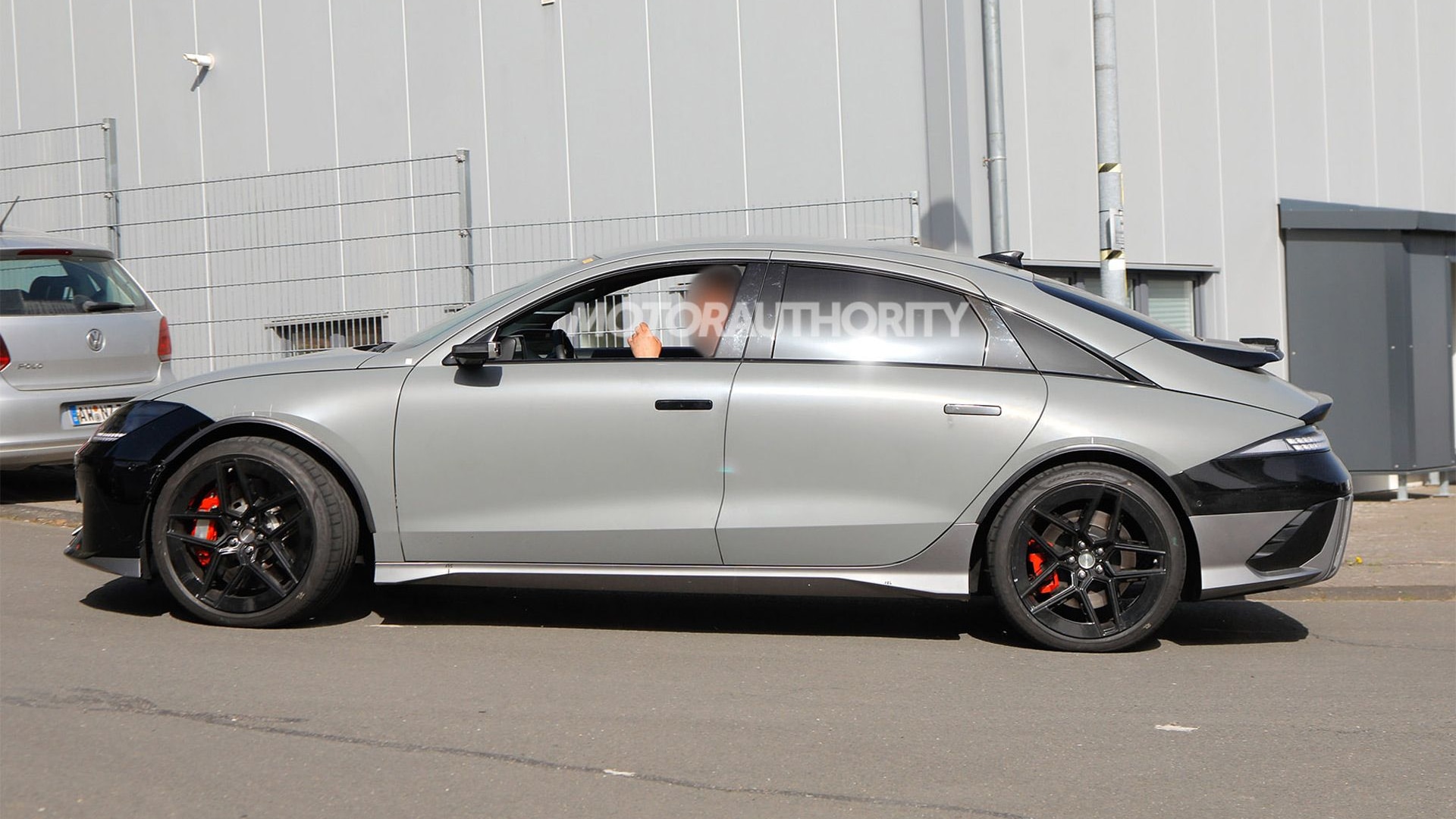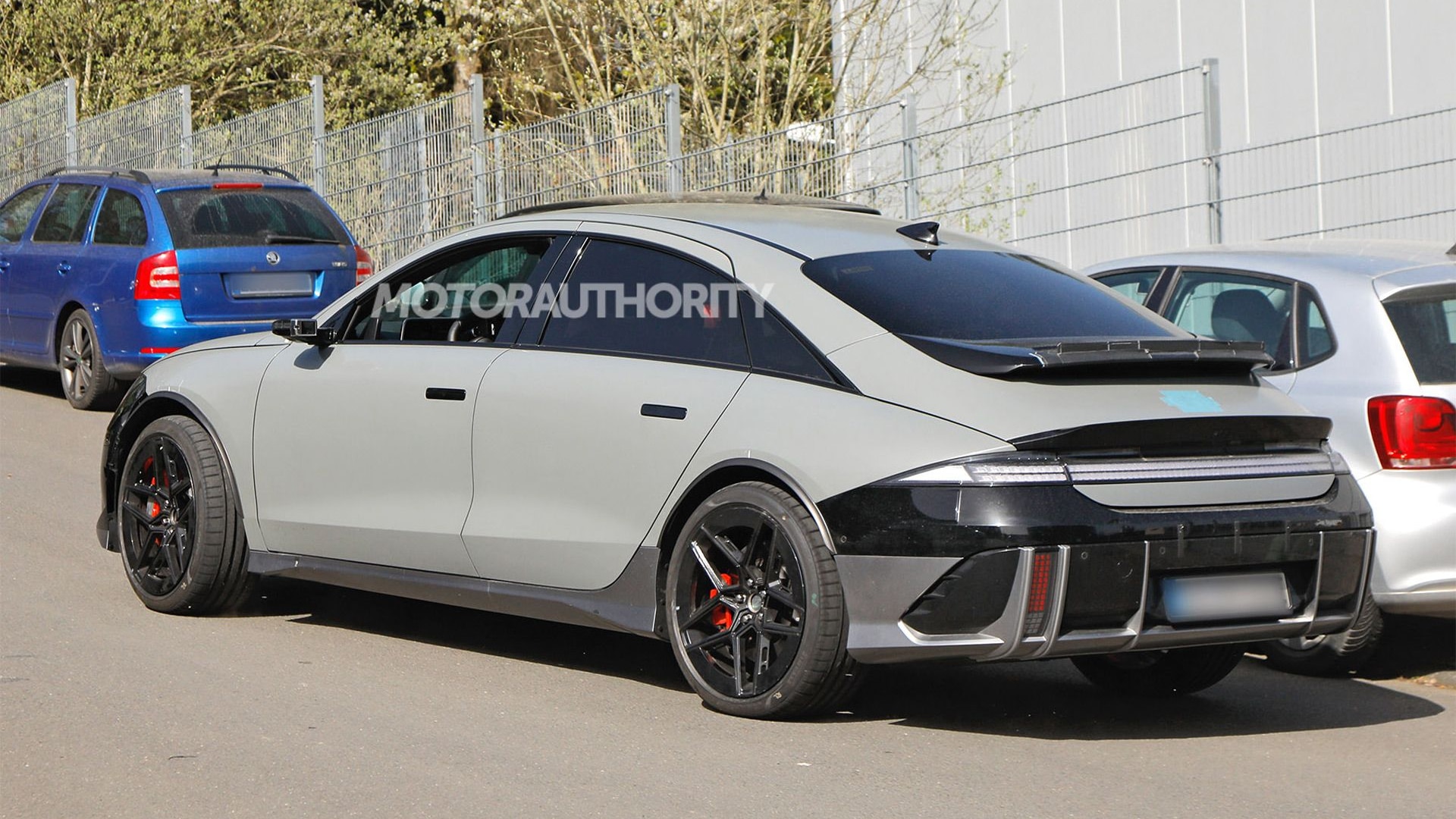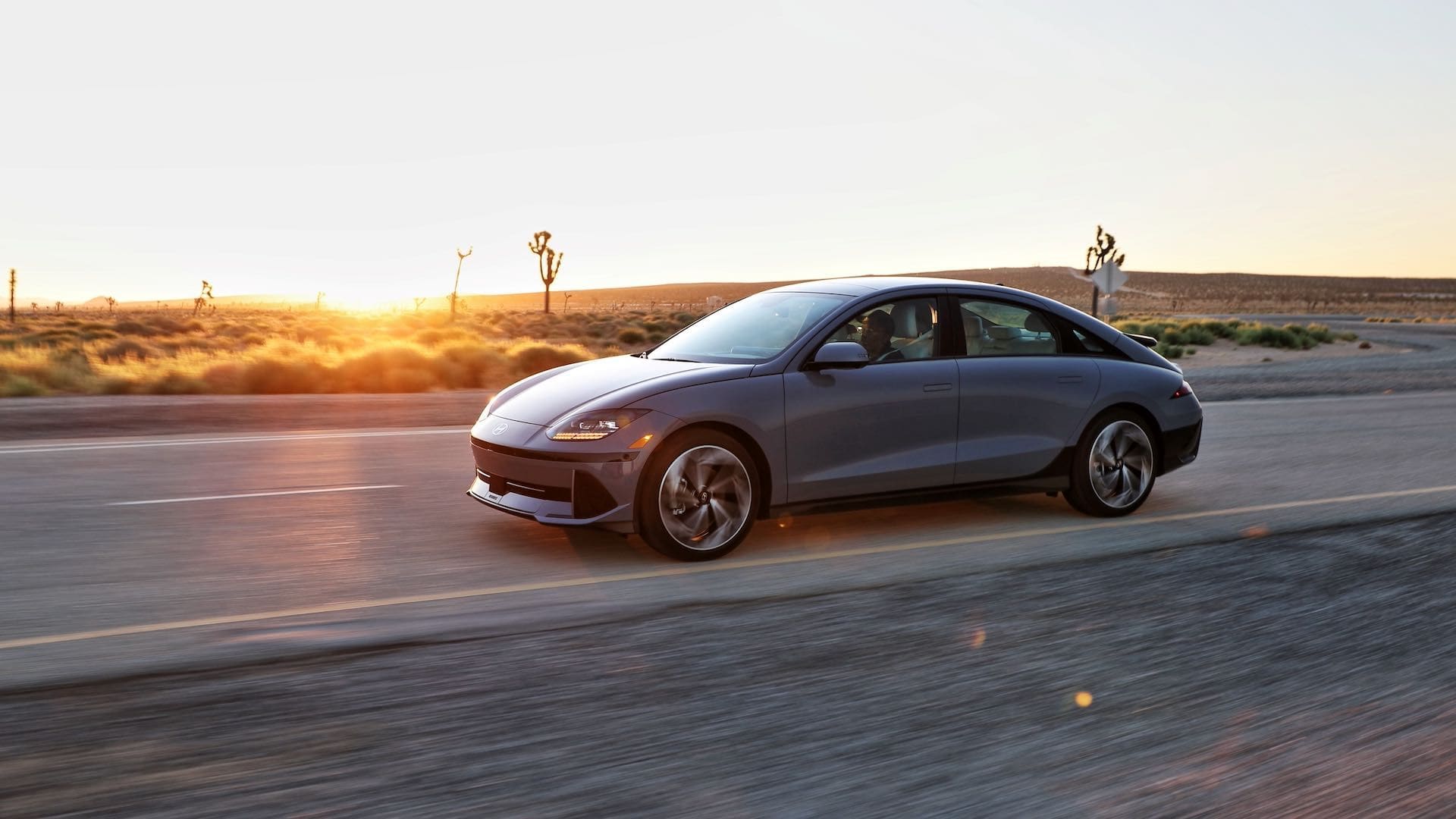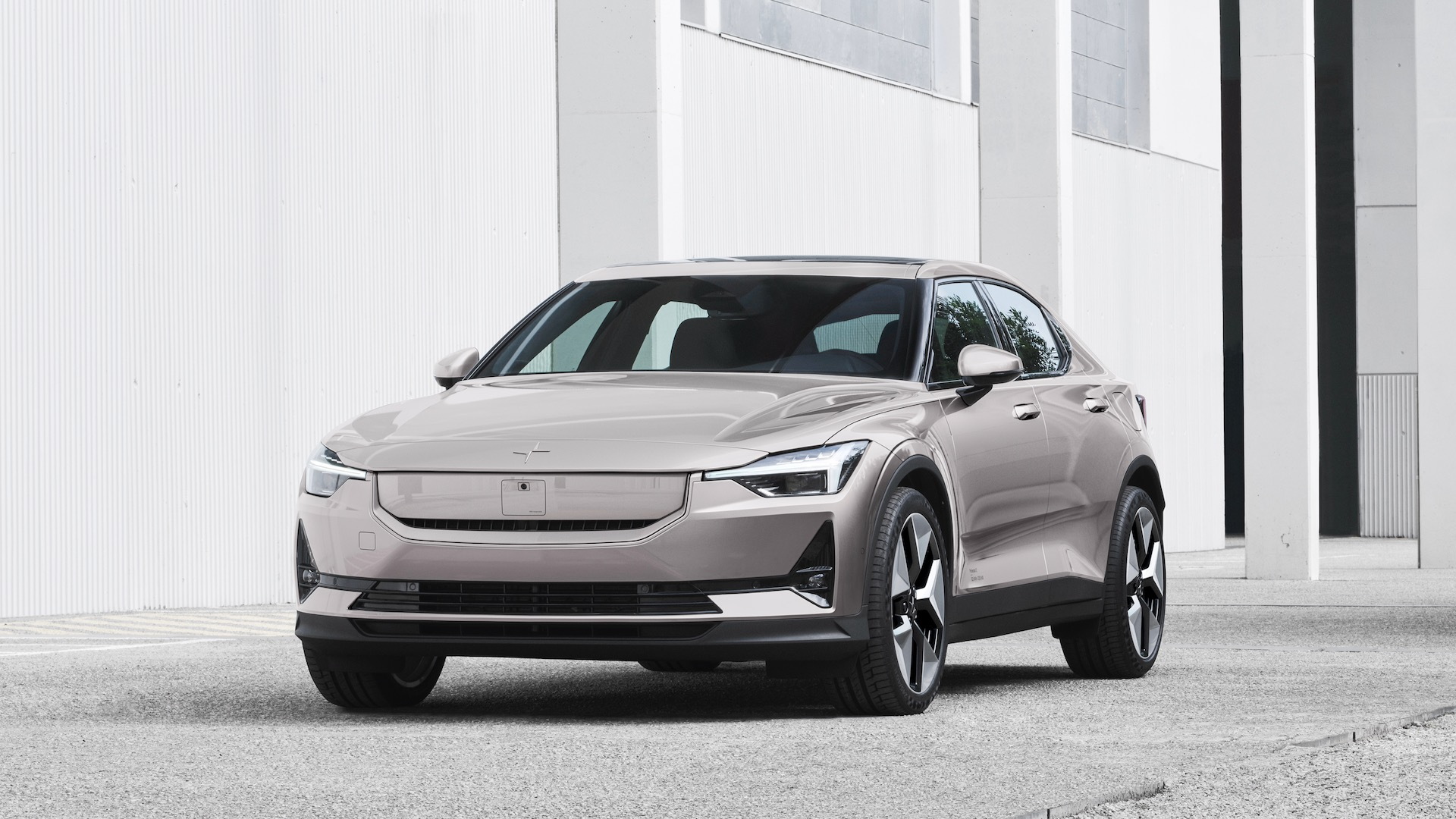The Hyundai N performance lineup looks set to be expanded, once again with an electric vehicle.
Hot on the heels of the launch of the N division's first EV, the 2025 Ioniq 5 N, Hyundai's in-house tuner now looks to be cooking up an Ioniq 6 N.
Engineers were recently spotted testing an Ioniq 6 sedan fitted with some performance upgrades not far from Germany's Nürburgring racetrack.
Among the upgrades that can be seen are modified wheel aches to fit a wider track, a powerful brake package with front rotors that almost fill the 20-inch wheels fitted to the vehicle, and what looks like a gurney flap on the upper rear wing.
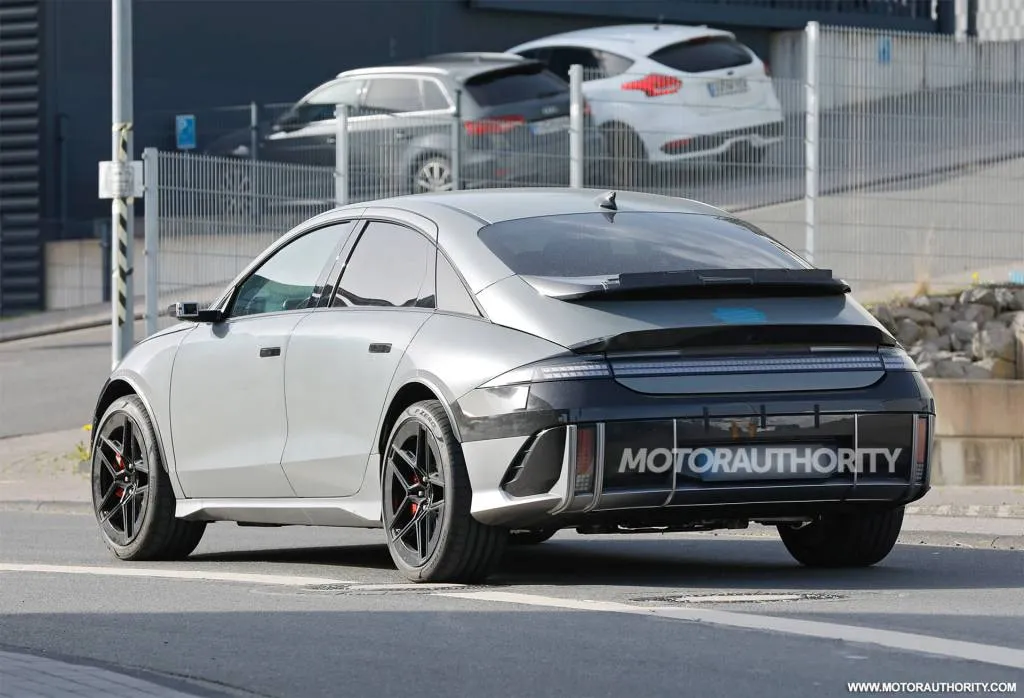
2026 Hyundai Ioniq 6 N spy shots - Photo credit: Baldauf
The regular Ioniq 6 at present tops out with 320 hp from a dual-motor all-wheel-drive system. Any N version is likely to deliver more than double that figure. The Ioniq 5 N delivers 600 hp and can temporarily boost that figure to 641 hp. Hyundai quotes a 0-60 mph time of 3.3 seconds for the compact crossover. Expect something similar for any Ioniq 6 N.
The vehicle would also likely benefit from N-developed software features designed to enhance driving fun. In the case of the Ioniq 5 N, there are features like the N e-shift to simulate the feel of gear shifts (the vehicle actually uses a single-speed transmission), the N Active Sound+ that has multiple sound options including one that simulates the sound of a gas engine, and the N Pedal which applies negative torque through the powertrain to put more weight over the front wheels to aid handling.
Hyundai hasn't announced plans for an Ioniq 6 N, but a debut in 2025 as a 2026 model is likely should the vehicle reach production. That's roughly when the regular Ioniq 6 is expected to receive a mid-cycle update.
Hyundai N is likely to still launch vehicles with gas engines, though these may be electrified in some form. Albert Biermann, a BMW M veteran and the former head of Hyundai N, recently said powerful hybrid powertrains are being developed for various vehicles from Hyundai Motor Group and some of these could be used in a Hyundai N car.
